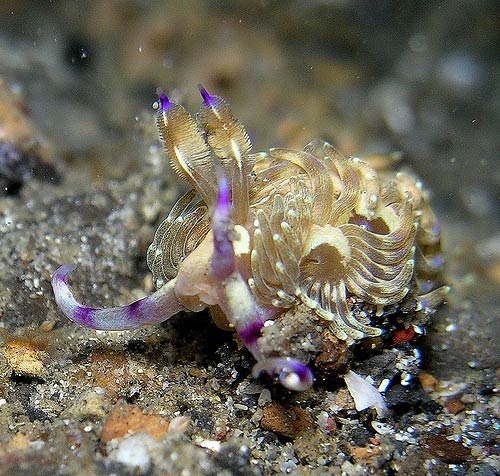Papua New Guinea Diving
Papua New Guinea Dive Regions
- North Coast
- South Coast
- New Britain
- New Ireland
Papua New Guinea Diving
South Coast
Port Moresby

With the Papuan Barrier Reef just offshore, breaking the swell from the Coral Sea ...

With the Papuan Barrier Reef just offshore, breaking the swell from the Coral Sea that separates PNG from Australia, Port Moresby probably has the best diving of any capital city in the world. Coral growth is excellent and marine life abundant, although visibility can sometimes be reduced by murky water washing out from the bays and lagoons. When seas are calm and the tide is coming in, however, visibility can reach 30m on the outer reefs and 15m inside the lagoon.
There are several islands that provide sheltered mooring and interesting critter diving, and there are wrecks of ships - some deliberately sunk for dvers - and aircraft remains to explore.
A 10 hour sil out of Port Moresby brings you to the Eastern Fields, one of the most magnificent of all Coral Sea reefs with fantasticaslly clear water.
Closer ot home there are many good dive spots including the Finger, the Beacon, Lagamara and much more. Loloata is a dive resort located on an isand at the entrance of the Bootless Inlet, an easy drive and boat ride from the city
Milne Bay

The diving in Milne Bay is exceedingly varied: muck diving at Observation Point & Dinah's ...

The diving in Milne Bay is exceedingly varied: muck diving at Observation Point & Dinah's Beach; one of the world's classic coral structures, Deacon's Reef; drift dives; wreck dives; wall dives; shallow patch reefs; and deep oceanic reefs. If I had to dive in the same place for the rest of my life I would be hard pressed to think of a better place than Milne Bay, with Dinah's Beach to one side and Deacon's Reef to the other.
The Muscoota
Originally a 4-masted barque named Buckingham, the Muscoota was launched in 1888 and had a glorious history, breaking records on a regular basis. However, her life changed radically when she was rammed by the Norwegian steamship Yarra in Melbourne in 1922. Despite damages being awarded against the Yarra, Muscoota's days as a sailing ship were over, and she ended up as a coaler in Milne Bay refuelling American warships when she was pushed under the water by a warship that swung beam on to her in a strong wind. She was towed to Discovery Bay and sank. Muscoota now rests with her bow thrust out of the water and her stern at 75ft. The wreck is home to a profusion of fish and coral life.
Cobb's Cliff
This is another patch reef that looks somewhat like a castle. The outer reef edge is the battlements, varying from 30 to 80ft in depth and the castle grounds within are a sandy area at about 100ft. Here can often be seen sleeping white tips and rays. The outside of the battlements drop into water well over 1000ft deep. While the inside of the reef and the sandy area below are interesting it is the outer reef edge that offers the most exhilarating diving -- fan corals and sponges sprout from a healthy coral substrate, turtles, grey reef sharks and great schools of fuseliers in the open water.
Dinah's Beach
Who would have thought it? Next to Deacon's Reef, one of the most exquisite reef dives in the world, is a non-descript beach of black coral sand. It was here that "muck diving" was invented! Among the coral rubble, rotting tree trunks and the other rubbish can be found a host of weird critters -- octopi, mantis shrimps, pygmy lionfish, juvenile lionfish, numerous species of nudibranch, shrimps, crabs, cockatoo waspfish, clownfish and anemones, shells and heaps of other stuff. And because most of the diving is done in 10-30ft of water, bottom time can be extended to the maximum! This is a world class dive despite the seemingly uninteresting look of the seascape.
Deruffs Bomber
A World War II Hudson Bomber located by Chertan on her maiden voyage. The aircraft lies upside down and intact in 45ft of water. To date few people have dived this wreck.
Wahoo Point
Located in the north coast of the mainland, the profile of the reef drops from 2ft to 25ft, where the bottom shelves slowly to 50ft about 140ft from the shoreline. A shallow shelf at 50ft then leads to a sheer drop-off that plunges to over 200ft. The shallow reefs play host to a large variety of sponges and fish.
Bootless Bay

Loloata offers the unique qualities of convenience and natural beauty. The resort island is only ...

Loloata offers the unique qualities of convenience and natural beauty. The resort island is only 15 minutes from the international airport in Port Moresby, but you'll feel like you're a world away on this beautiful Melanesian garden isle.
Loloata and its surrounding reefs and islands are the perfect nature study and are regularly visited by botanists, marine biologists and others with a special interest in our flora, fauna and rarer marine species.
A Brief History
The name Loloata is made from two Motu words, "loloa" and "ta" which mean "hill" and "one." So literally the name means "one hill."
The main house was built as a private residence in the early 60's and, at one stage, chicken farming was attempted. In 1970, Loloata was established as a weekend resort, and in 1978 was run as a licensed full-time resort catering to holiday makers, diving and water enthusiasts and a wide range of government and private enterprise conference groups.



